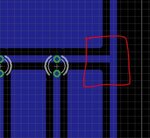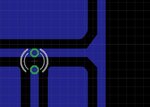tajiknomi
Member level 4

I am a noob in PCB design and would like to know about the common mistakes beginners do while designing PCB. Here is a simple PCB which i had made.

The problem I am facing is that the connector on the bottom is NOT ON THE EDGE as shown here

If I drag these connectors down, the only problem which I am a concern of is that PCB will not look good because i have to remove the trace-pattern and I don't want to do that :smile:

The problem I am facing is that the connector on the bottom is NOT ON THE EDGE as shown here

If I drag these connectors down, the only problem which I am a concern of is that PCB will not look good because i have to remove the trace-pattern and I don't want to do that :smile:







